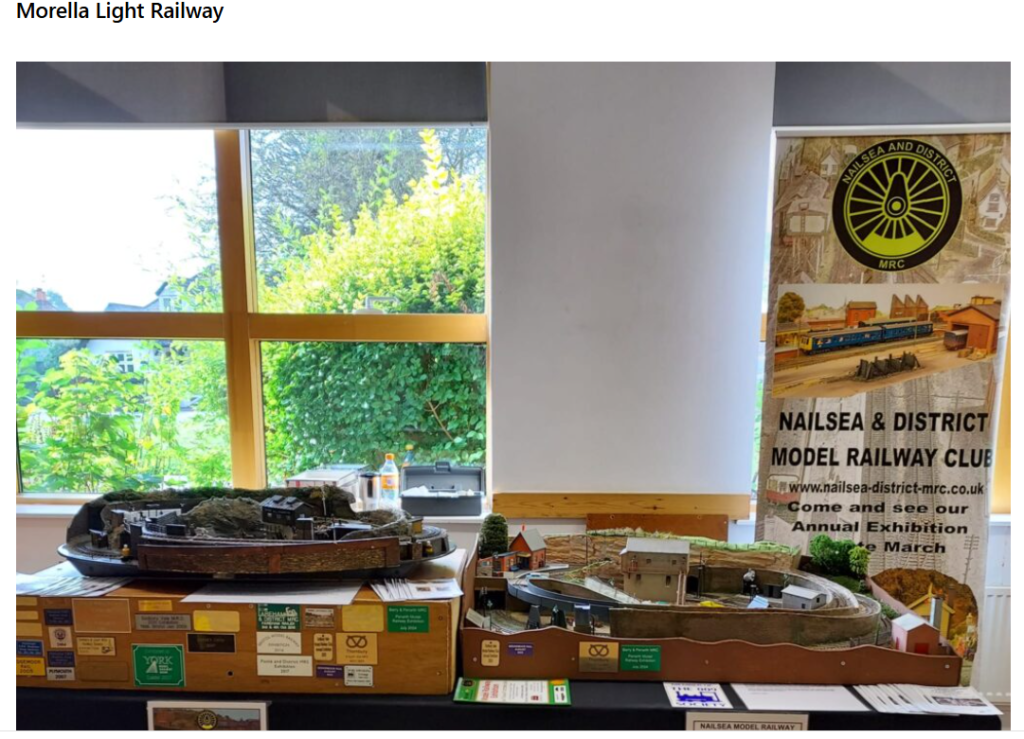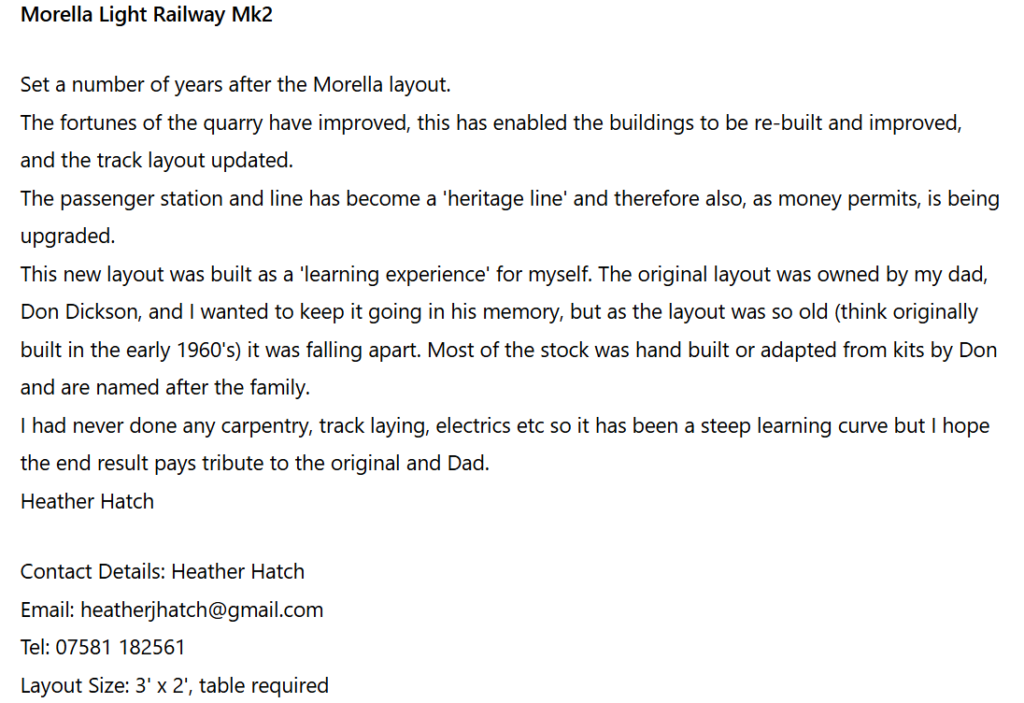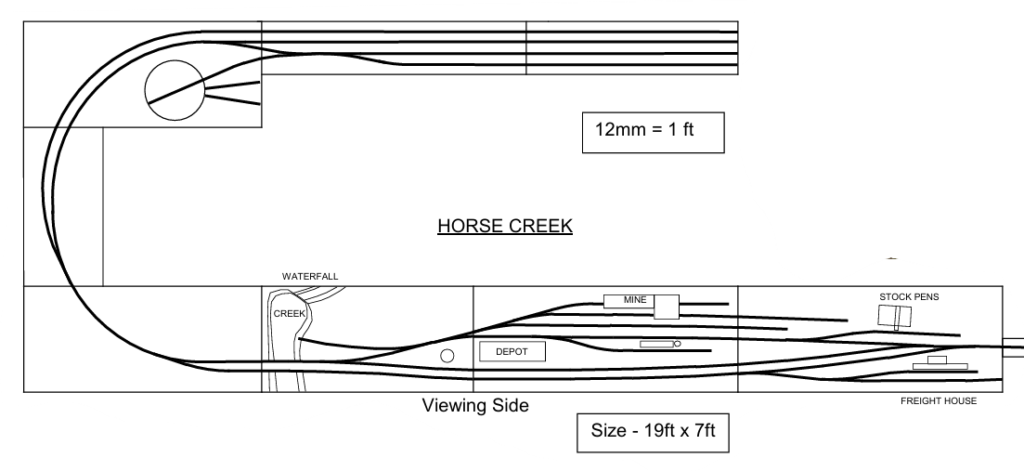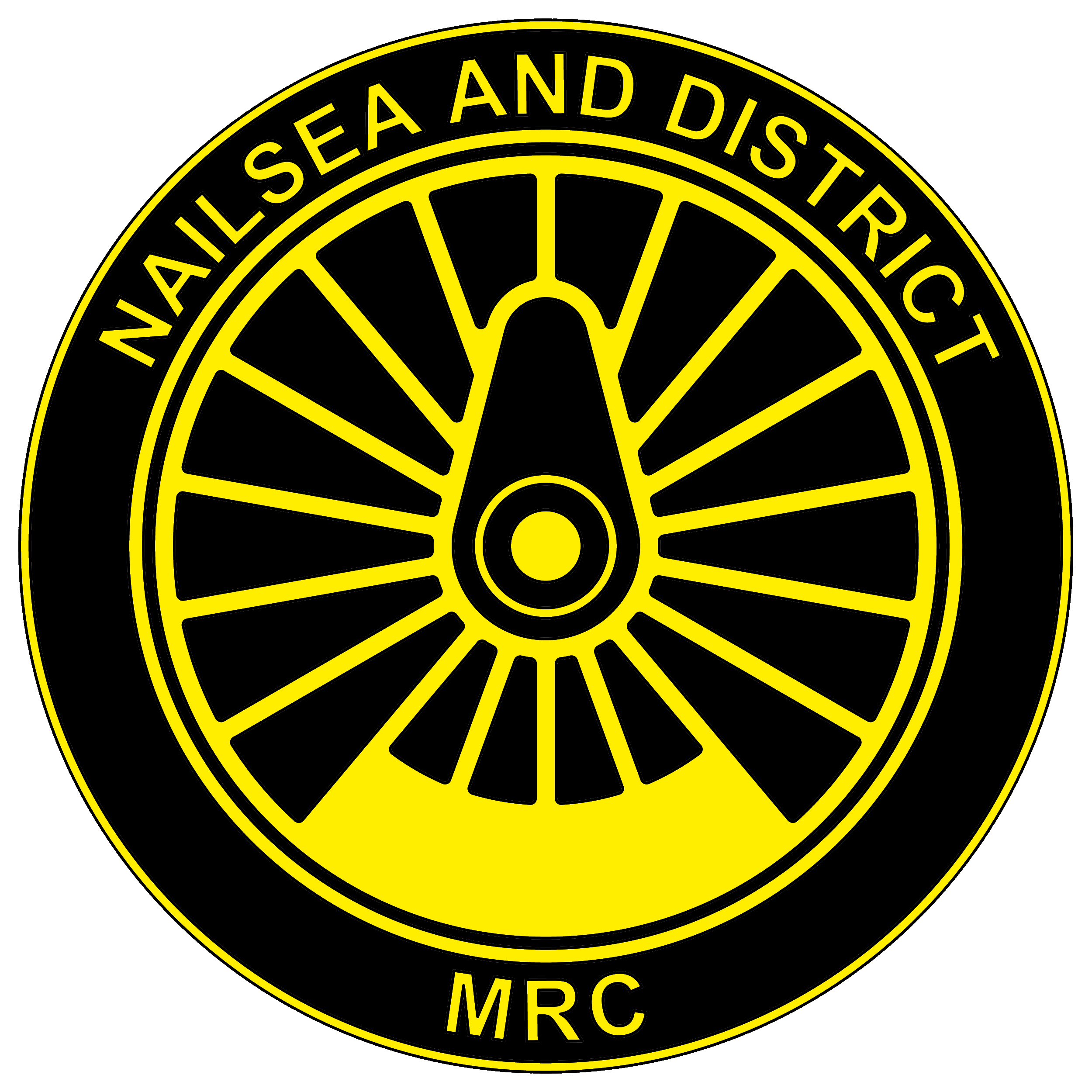members layouts





Often as a pair of layouts with dad’s Morella. Total space required 8’.
Horse Creek

Designed and created by Peter Everitt
The year is somewhere around 1957. Horse Creek is a small settlement in southern Wyoming, just to the East of the Rocky Mountains and about 30 miles north of Cheyenne. The name comes from the ‘intermittent’ river which flows through it taking melt water from the Rockies down to join the Mississippi River and eventually to reach the Gulf of Mexico.
At this point the creek is crossed by the main line of the Colorado and Southern Railway. First generation cab-unit diesels (F3 & F7) are the main power and the road switcher or hood-units (SD7 & 9) have just arrived; however there is still the occasional steam operation.
The C&S is a short line (740 route miles) which, with its partner the Fort Worth and Denver and their parent the Chicago Burlington and Quincy, provides the most direct route between the North West coast (Seattle) and the ports on the Gulf of Mexico (Houston).
The model, as always, is incomplete and is not intended to be a precise replica of the prototype; but to be typical of the high plains (4500ft) with its wide, open, spaces and rolling hills. The real Horse Creek is a through station and most of the layout can be operated as a set of standard NMRA Modules. In the current exhibition set-up it is converted from a through station into a terminus and the traffic is essentially local.
The main business is empty hoppers into the iron ore mine and loads outbound. Additional traffic is general freight to the various industries and the occasional, but still excessive, passenger train.
Locos and rolling stock are a mixture of ready to run, ‘shake the box’ and kit built. All are in various states of weathering and ageing although the C&S and its parent the CB&Q kept most of its equipment, locos in particular, clean and in good order.
Track is a mixture of Peco and Micro Engineering with code 83 for the main line and code 75 in the yard areas. Point control is mainly manual via slide switches local to the point concerned. Some of the more remote points are driven by Tortoise slow motion motors. Couplers are KD with magnetic delayed uncoupling.
Buildings are a mixture of plastic and wood kits (some built to the plan, some kitbashed) and scratch built structures where nothing was available which fitted the bill. Interior detail and illumination are slowly being added (all buildings are removable so that this sort of retrofitting is possible)
Baseboard construction is lightweight open frame (mainly 6mm ply) with styrofoam and plaster shell landscape.

